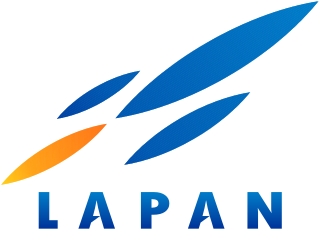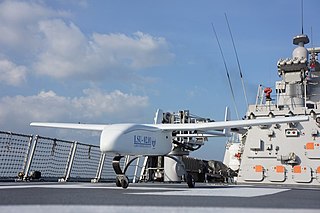Kartika I is an Indonesian sounding rocket built by LAPAN, AURI, Bandung Institute of Technology, and Pindad under PRIMA (Sounding and Military Rocket Development Project/Indonesian: Proyek Pengembangan Roket Ilmiah dan Militer Awal) project. This rocket was launched on August 14, 1964, in LAPAN Rocket Launching Station Pameungpeuk, West Java, becoming the first sounding rocket ever launched in Indonesia, and the fourth in Asia after Japan through Kappa Rocket, China with T-7 and Pakistan with the Rehbar series.
On May 31, 1962, Indonesian government under Sukarno commenced aeronautics exploration when the Aeronautics Committee was established by the Indonesian Vice Prime Minister I, Juanda, who was also the head of Indonesian Aeronautics. The secretary of Indonesian Aeronautics, RJ Salatun, was also involved in the establishment.
On September 22, 1962, the PRIMA project was formed as an affiliation of AURI (Indonesian Air Force) and ITB (Bandung Institute of Technology). The outcome of the project was the launching of "Kartika"("star") series rockets and it's telemetric ordnances on August 14, 1964, in LAPAN Launching Station Pameungpeuk, West Java. [1]
PRIMA project as one of the subproject of Outer Space Ionosphere Rocket Project (Proyek Roket Ionosfer Angkasa Luar) that is known as "Project S" was led by Laksda (Rear Admiral) Udara Budiardjo and Kolonel (Colonel) Udara RJ Salatun.
Kartika rocket series only has one version, Kartika I.

A sounding rocket or rocketsonde, sometimes called a research rocket or a suborbital rocket, is an instrument-carrying rocket designed to take measurements and perform scientific experiments during its sub-orbital flight. The rockets are used to launch instruments from 48 to 145 km above the surface of the Earth, the altitude generally between weather balloons and satellites; the maximum altitude for balloons is about 40 km and the minimum for satellites is approximately 121 km. Certain sounding rockets have an apogee between 1,000 and 1,500 km, such as the Black Brant X and XII, which is the maximum apogee of their class. Sounding rockets often use military surplus rocket motors. NASA routinely flies the Terrier Mk 70 boosted Improved Orion, lifting 270–450-kg (600–1,000-pound) payloads into the exoatmospheric region between 97 and 201 km.

The Vikram Sarabhai Space Centre (VSSC) is a major space research centre of the Indian Space Research Organisation (ISRO), focusing on rocket and space vehicles for India's satellite programme. It is located in Trivandrum, in the Indian state of Kerala.

Stasiun Peluncuran Roket or Staspro is a rocket launch site managed by the Indonesian National Institute of Aeronautics and Space (LAPAN). It is located at Pameungpeuk Beach in the Garut Regency on West Java near Cilautereun and has been active since 1965 to perform engine tests and launch sounding rockets.

Indonesian Aerospace (IAe), is an Indonesian aerospace company involved in aircraft design and the development and manufacture of civilian and military regional commuter aircraft, and a subsidiary of state-owned electronics manufacturer Len Industri. The company was formerly known as PT Industri Pesawat Terbang Nusantara (Persero). It was expanded from a research and industrial facility under the auspices of the Indonesian Air Force, namely Lembaga Industri Penerbangan Nurtanio (LIPNUR) or Nurtanio Aviation Industry Institute.

The National Institute of Aeronautics and Space was the Indonesian government's space agency. It was established on 27 November 1963, by former Indonesian president Sukarno, after one year's existence of a previous, informal space agency organization. LAPAN is responsible for long-term civilian and military aerospace research.

The Indonesian Institute of Sciences was the governmental authority for science and research in Indonesia. It consisted of 47 research centers in the fields ranging from social to natural sciences.
Lapan- TUBSat is Indonesia’s first remote sensing satellite, made by the experts from National Institute of Aeronautics and Space and Technical University Berlin (TUB) Germany. The uses of the satellite are for Indonesian natural resources observation and weather forecast for the Indonesian area. Lapan-TUB Sat was launched aboard PSLV-C7 on 1 January 2007 from the Indian space centre in Sriharikota and still functioning well after the fifth birthday.

Kertajati International Airport is an international airport serving the Greater Bandung and Cirebon metropolitan areas, as well as parts of the West Java and Central Java provinces, Indonesia. Now one of the two largest airports in Indonesia, it is located in Majalengka Regency, approximately 68 kilometres (42 mi) east of Bandung.
Samaun Samadikun was an Indonesian electrical engineer.
Satellite Orbiting Rocket Number 420, or Pengorbitan-1, was a proposed space launch vehicle under consideration in Indonesia from 2008 to 2012. Recent developments have focused on a larger core stage called RX-420 and a smaller upper stage called RX-320. Therefore, this particular version RPS-420 is no longer being pursued. However, the goal remains valid: Indonesia aims to reach orbit with self-made rockets and satellites in order to become an Asian space power.

The Kopasgat is the air force infantry and special forces corps of the Indonesian Air Force. The corps is also known as the Orange Berets from the colour of their service headgear. Kopasgat is trained to seize and defend airfields from enemy forces known as Operasi Pembentukan dan Pengoperasian Pangkalan Udara Depan , airborne operations, and other specific military operations within the scope of the Indonesian Air Force.

Agustinus Adisutjipto was born in Salatiga, Central Java, and raised as a Roman Catholic. He was the first pilot of the Indonesian Air Force, whose plane was shot down by the Dutch during the Indonesian National Revolution. He was posthumously declared a National Hero of Indonesia in 1974.
The RX rocket family is a series of solid-fuel rockets developed by the Indonesian National Institute of Aeronautics and Space (LAPAN).

Indonesia operates a single high-speed rail service between two of the country's largest cities, Jakarta and Bandung. It is future branded as Whoosh ., which is operated by Kereta Cepat Indonesia China (KCIC).

The LAPAN LSU-02 is an unmanned aerial vehicle (UAV) developed by the Lembaga Penelitian dan Penerbangan Nasional (LAPAN) of Indonesia. It was developed in 2012 for both civilian and military purposes. The Indonesian military classifies it as a tactical UAV because of its ability to fly over long ranges for its size. It broke an Indonesian record for longest ranged UAV built locally.

R-Han 122 is a family of rocket artillery developed by PT Dirgantara Indonesia of Indonesia with maximum speed Mach 2.95 and maximum range of 32 km (20 mi). It is used primarily by the Indonesian military.

Baduy is one of the Sundanese-Baduy languages spoken predominantly by the Baduy people. It is conventionally considered a dialect of Sundanese, but it is often considered a separate language due to its diverging vocabulary and cultural reasons that differ from the rest of the Sundanese people. Native speakers of the Baduy language are spread in regions around the Mount Kendeng, Rangkasbitung district of Lebak Regency and Pandeglang Regency, Banten Province, Indonesia. It is estimated that there are 11,620 speakers as of 2015.

The Elang Hitam is an unmanned aerial vehicle (UAV) being developed by PT Dirgantara Indonesia (IAe) in cooperation with a consortium of five other institutions. This drone was first shown in December 30, 2019 at the PTDI hangar, Bandung, West Java.

Wiranto Arismunandar was an Indonesian academic. He served as the rector of the Bandung Institute of Technology from 1988 until 1997 and as a minister of education and culture for two months in 1998.

Air Chief Marshal (Ret.) Elang Soerjadi Soerjadarma was the Commander of the Indonesian National Armed Forces from 1959 to 1962 and the Chief of Staff of the Indonesian Air Force from 1946 to 1962.